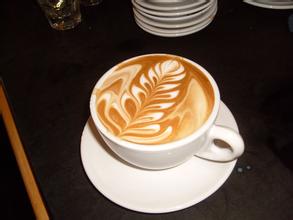Special flavor Kenyan coffee Flavor Taste Manor Features Berman Manor
This is the earliest classification method and is still in use in many parts of Brazil. The method of identification is to take a random sample of 300 grams and put it on black paper, because black paper can best avoid reflection. Then, professional appraisers carefully inspect the samples to find defective beans and accumulate different scores according to the types of defects. For example, 1 black bean counts as 1 point, 1 small stone counts as 1 point, 1 large stone counts as 5 points, 5 broken beans count as 1 point, 5 pest beans count as 1 point, 2 sour beans count as 1 point, 1 large dry peel counts as 1 point, 2 medium dry peel counts as 1 point, 3 small dry peel counts as 1 point, 5 unshelled beans count as 1 point, 3 shell beans count as 1 point, etc. After the appraisal, the grades were NY2 ~ NY8 according to the accumulated defect scores, and there was no NY1. If you want to buy the first grade (NY1) Brazil beans, it will be a joke. Indonesian coffee beans are also classified according to this classification method, which is mainly divided into 6 grades, namely Gr1 ~ Gr6. The same applies to Ethiopia, which has a maximum rating of Gr2.
* Highly graded by origin
Generally speaking, due to the cold climate, coffee growth speed is slow, the density of raw beans is higher, the texture is harder, the coffee is more concentrated and aromatic, and there is a soft sour taste; on the contrary, the density of raw beans is smaller, the texture is not hard, the quality of coffee is poor, so some people also grade it by "hardness". This classification method can be divided into the following categories: extremely hard beans, about 4,500 to 5,000 feet high, referred to as SHB; tall hard beans, about 3,000 to 4,500 feet high, referred to as GHB; hard beans, about 2,000 to 3,000 feet high, referred to as HB; Pacific coastal areas, about 984 to 3,280 feet high, referred to as Pacific. Guatemala, Costa Rica, El Salvador, Mexico, Honduras and Haiti are all classified in this classification method. This classification method is carried out by various perforated screens. The screens have various specifications and are identified by numbers. The numbers are related to the meshes. The mesh size is 1/64 inch, if the mesh diameter is 18/64 inch, it means that the mesh number is 18; if the mesh diameter is 17/64 inch, the mesh number is 17. And so on, there are 19, 16, 15, 14 and other numbers of screens.
The process involves placing coffee beans on a net and shaking them back and forth, either mechanically or manually, so that beans smaller than the mesh fall out and are rejected; those rejected are then sifted through a smaller screen. After a series of screenings, the coffee bean grade was compiled.
After classification, it is divided into AA, A, B, C and PB grades. AA is the highest level, A, B and C decrease in turn, and those below C are usually taken as feed or fertilizer. In addition, round beans have a special flavor, and beans are relatively small, so they are self-contained, that is,"PB", usually at a higher price. This classification is commonly used in Kenya, New Guinea, Puerto Rico, Zimbabwe, Tanzania and Uganda

Important Notice :
前街咖啡 FrontStreet Coffee has moved to new addredd:
FrontStreet Coffee Address: 315,Donghua East Road,GuangZhou
Tel:020 38364473
- Prev

Balanced and refreshing Guatemala Coffee Manor Flavor and Taste introduction to Incht Manor
The aroma of coffee liberates all forms, hearts and national boundaries. Through coffee, the mood leaves the country at any time and lands in a strange country half a world away. Even at the end of the world, you can share a mood. Antigua was the capital of the Spanish colonial period in 1543. Although this emerald-like valley has been in all directions, layers upon layers, deliberately waiting for development and crisis since ancient times.
- Next

Introduction to the flavor and taste characteristics of Indonesian coffee manor Kaha Yang Gan Manor in Kopi Luwak, Indonesia
Manning coffee is considered to be the most mellow coffee in the world. When tasting Mantenin, you can feel obvious lubrication on the tip of the tongue and low acidity, but this acidity can also be obviously tasted. Leaping slight acid mixed with the richest aroma, so that you can easily feel the lively factor in the mild fragrance. In addition, this kind of coffee has a light taste.
Related
- Does Rose Summer choose Blue, Green or Red? Detailed explanation of Rose Summer Coffee plots and Classification in Panamanian Jade Manor
- What is the difference between the origin, producing area, processing plant, cooperative and manor of coffee beans?
- How fine does the espresso powder fit? how to grind the espresso?
- Sca coffee roasting degree color card coffee roasting degree 8 roasting color values what do you mean?
- The practice of lattes: how to make lattes at home
- Introduction to Indonesian Fine Coffee beans-- Java Coffee producing area of Indonesian Arabica Coffee
- How much will the flavor of light and medium roasted rose summer be expressed? What baking level is rose summer suitable for?
- Introduction to the characteristics of washing, sun-drying or wet-planing coffee commonly used in Mantenin, Indonesia
- Price characteristics of Arabica Coffee Bean Starbucks introduction to Manning Coffee Bean Taste producing area Variety Manor
- What is the authentic Yega flavor? What are the flavor characteristics of the really excellent Yejasuffi coffee beans?

